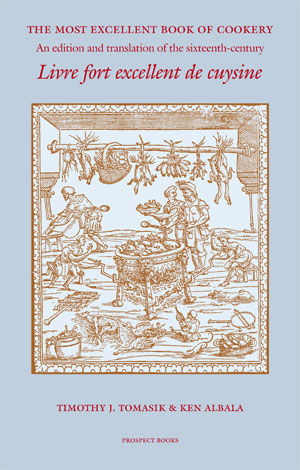Description
Ken Albala, Timothy J. Tomasik
The Most Excellent Book of Cookery
An edition and translation of the 16th-century ‘Livre fort excellent de cuysine’
| • The first modern printing of a little-known French cookbook • • Parallel texts and commented translation • • Informative introduction on French Renaissance cookery •The Livre fort excellent de cuysine is one of a family of cookery books that first saw the light with Pierre Sergent’s La Fleur de toute cuysine (renamed Le Grand cuisinier de toute cuisine) of 1542. This edition of the Livre fort excellent was published in 1555. Scholars have often dismissed the printed cookbooks of 16th-century France as simple rehashes of the great medieval Viandier of Taillevent or as merely concentrating on marginal dishes such as sweets and sugarwork. True French cooking, they say, did not start until the publication of Le Cuisinier françois by La Varenne in 1651. While there is some truth in this, the translators and editors of this book would maintain that the change from medieval to modern (already under way in Italy and Spain for example) can be dated back to this book and its kindred; that it was more than a plagiaristic copy.The Livre fort comprises about 70 pages of original French, with an English translation on facing pages. The translation is the work of Timothy J. Tomasik, Associate Professor of French, Valparaiso University, Indiana; an historical introduction discussing the culinary significance of the work is by Ken Albala, Professor of History at the University of the Pacific, Stockton, California. Professor Tomasik has translated other contemporary gastronomic texts and has written many articles on the French table in the Renaissance, and co-edited the volume At the Table: Metaphorical and Material Cultures of Food in Medieval and Early Modern Europe. Professor Albala is the author of Eating Right in the Renaissance and a leading light in historical food studies here and in America. He is editor of the journal Food, Culture and Society. |

